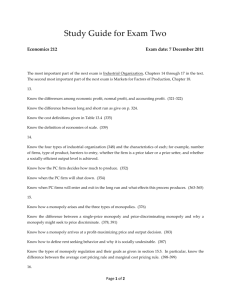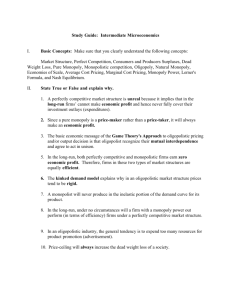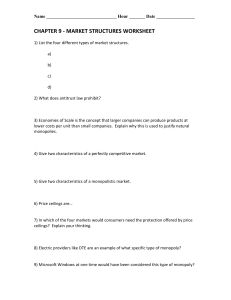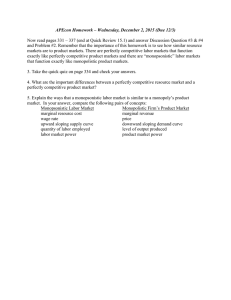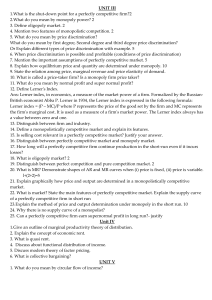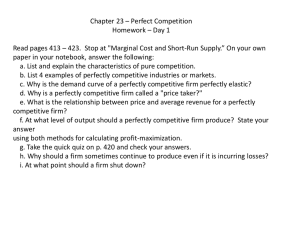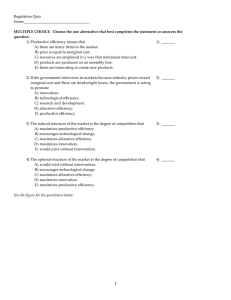AQA ECON3 – June 2013 – Q7 – Model Answer
advertisement
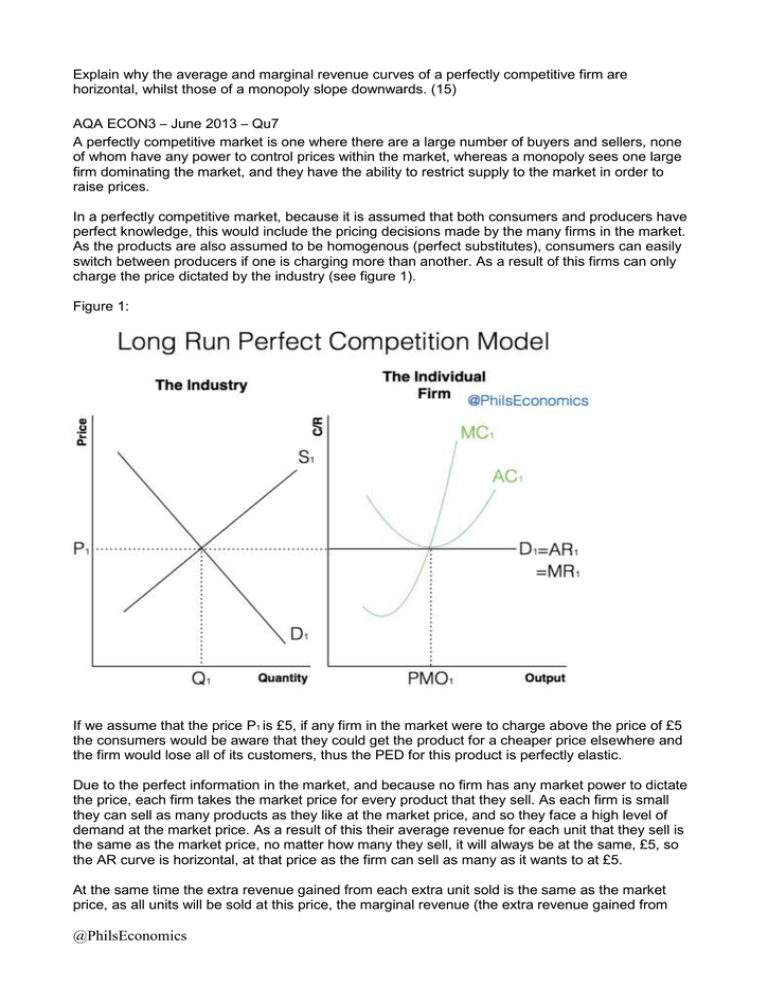
Explain why the average and marginal revenue curves of a perfectly competitive firm are horizontal, whilst those of a monopoly slope downwards. (15) AQA ECON3 – June 2013 – Qu7 A perfectly competitive market is one where there are a large number of buyers and sellers, none of whom have any power to control prices within the market, whereas a monopoly sees one large firm dominating the market, and they have the ability to restrict supply to the market in order to raise prices. In a perfectly competitive market, because it is assumed that both consumers and producers have perfect knowledge, this would include the pricing decisions made by the many firms in the market. As the products are also assumed to be homogenous (perfect substitutes), consumers can easily switch between producers if one is charging more than another. As a result of this firms can only charge the price dictated by the industry (see figure 1). Figure 1: If we assume that the price P1 is £5, if any firm in the market were to charge above the price of £5 the consumers would be aware that they could get the product for a cheaper price elsewhere and the firm would lose all of its customers, thus the PED for this product is perfectly elastic. Due to the perfect information in the market, and because no firm has any market power to dictate the price, each firm takes the market price for every product that they sell. As each firm is small they can sell as many products as they like at the market price, and so they face a high level of demand at the market price. As a result of this their average revenue for each unit that they sell is the same as the market price, no matter how many they sell, it will always be at the same, £5, so the AR curve is horizontal, at that price as the firm can sell as many as it wants to at £5. At the same time the extra revenue gained from each extra unit sold is the same as the market price, as all units will be sold at this price, the marginal revenue (the extra revenue gained from @PhilsEconomics selling one more unit of output) is also £5 and will continue to be at all levels of the firms output. This explains why the AR and MR curves of a perfectly competitive firm are horizontal. In the case of a monopoly, however, the consumers in that industry do not have easily accessible substitutes, as there may only be one supplier in the market. As a result of this, the monopoly faces a typical demand curve, where, as price falls, the amount of the product demanded increases (See Figure 2) Figure 2: As a result of this, as the monopoly decides the output to the market, as it is a price maker, whichever output they choose to produce at, the average revenue received is the same as the price at that output, as they will be charging the same price to all consumers at that output level, thus average revenue is the same as demand, which will slope downwards as higher prices induce the rationing function of the price mechanism. At the same time, in order to sell more products, the firm must not only lower the price of the subsequent products that they wish to sell, but must lower the price for all products, and so the marginal revenue that they receive for each unit is lower than the previous one, so marginal revenue will always fall at twice the rate of average revenue. This means that a monopoly will always face downward sloping AR and MR curves. @PhilsEconomics


